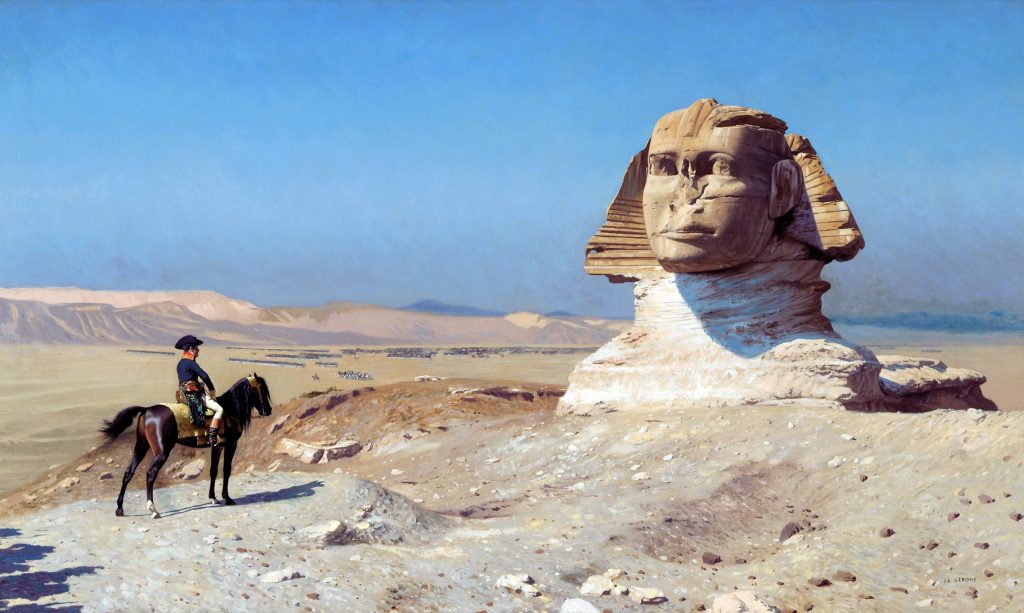Pop Culture
How Ridley Scott’s ‘Napoleon’ Repeats One of Art History’s Biggest Conspiracies
Did the French emperor really knock off the Great Sphinx's nose?

Did the French emperor really knock off the Great Sphinx's nose?

Verity Babbs

Ridley Scott’s Napoleon (2023), his latest feature film—which has been called his “finest since Gladiator”—was released yesterday following its November 14 premiere in Paris.
The film includes one of art history’s biggest conspiracies: that Napoleon Bonaparte, France’s first and most-famous emperor, had his troops fire canons at the Great Pyramid of Giza during his Egyptian campaign in 1798, shooting off the nose of the Great Sphinx in the process.
But did it happen? TIME spoke to the historian Michael Broers who consulted on the film, who remarked that Scott knew that “nothing like that happened”. The director decided to keep the scene in which the top of the Great Pyramid was shot off, after it made Broers laugh. In an interview with the Times Ridley Scott himself described the scene as “a fast way of saying he took Egypt”. The Great Pyramid and Sphinx in Giza are iconic Egyptian images, with archaeological evidence placing the Sphinx’s construction to 2500 B.C.E., while the Great Pyramid is the only remaining wonder of the ancient world.
However, it wasn’t Napoleon’s canon fire that damaged the face of this colossal structure. In drawings made by Danish explorer Frederic Louis Norden in 1737 and displayed in 1744, the Sphinx had already lost its nose at least 60 years before Napoleon’s invasion. Historian Bassam el-Shamaa also confirmed that the tale was no more than a rumor in his 2009 book Hokam Misr El-Qadema (Ancient Egypt’s Rulers), given that Napoleon’s battle actually occurred in the neighbourhood of Imbaba, around four hours away by foot from the Pyramid complex.
The main theories to explain the loss of the Sphinx’s nose are iconoclastic attacks taking place between the 10th and early 18th centuries, or progressive natural erosion from the elements over the course of the limestone statue’s five millennia lifetime. The Napoleonic conspiracy theory is believed to have appeared around the dawn of the 20th century.
More Trending Stories:
Masterpiece or Hot Mess? Here Are 7 Bad Paintings by Famous Artists
Who Won Auction Week? Here Are 9 Takeaways From New York’s Nearly $2 Billion Fall Sales
Kurt Cobain’s Old Jeans Just Set an Auction Record for Levi’s
Seller’s Remorse: How a Thrift Store Owner Let a $191,000 Painting Slip Through His Fingers for $4
A Prankster Used A.I. to ‘Improve’ Edward Hopper’s Classic ‘Nighthawks’
Chinese Artist Chen Ke Celebrates the Women of Bauhaus in a Colorful, Mixed-Media Paris Debut
A Centuries-Spanning Exhibition Investigates the Age-Old Lure of Money
Meet the Woman Behind ‘Weird Medieval Guys,’ the Internet Hit Mining Odd Art From the Middle Ages